Aldwell-Schachter Chapter 16
Click on a musical example for playback
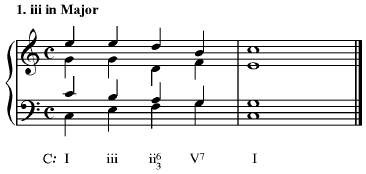
This is the use of III in major as passing to IV or ii6/3; it is almost a direct substitute for I6/3 under such circumstances.
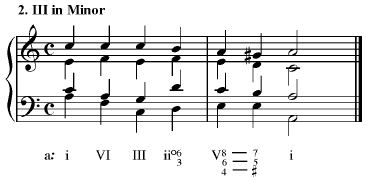
In minor keys, III is major and can be approached well from VI, which is also major and allows for a quasi V-I relationship.
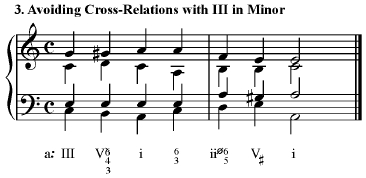
Cross-relations are a distinct possibility when writing progressions involving III in minor, due to the lowered leading tone in the chord. This example and the one following show the avoidance of a cross-relation by keeping the chromatic motion (^7-^#7) in the same voice—first in the soprano, and then in the tenor.
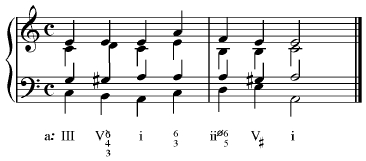
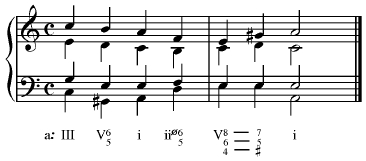
In this example, the cross-relation (between the tenor and the bass) is kept tolerable by making sure that the cross-relation involves at least one of the inner voices. Cross-relations between the outer voices should always be avoided.
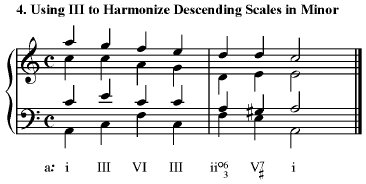
Using III enables us to do something that has previously been unavailable: harmonizing a descending minor scale, avoiding of course the raised ^7.
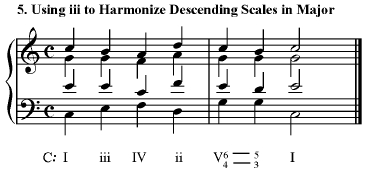
We can also use iii in major keys to harmonize a descending scale. The use of iii as a harmonization of ^7 helps to keep the tone from sounding like a leading tone, making for a smoother and more satisfying progression.
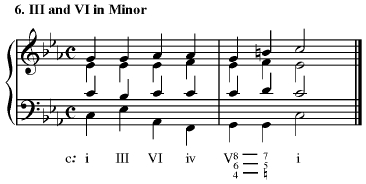
Using III together with VI in minor works well to lead into a final cadence; the major III acts as a quasi V to VI—enough so, in fact, that one could use III-VI to introduce a modulation to VI or iv.
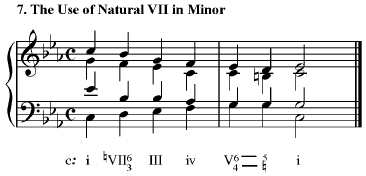
This is a signature use of the natural VII in minor keys (it’s a major triad, and not diminished!) It is used as a passing chord from I to III. It is, in effect, V6/3-of-III and allows a stepwise motion in the bass, as an expansion of I.
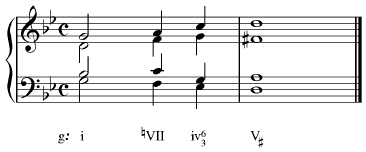
VII in root position can be used to pass from i to iv6, setting up a Phrygian cadence. It should not be surprising that this progression is encountered in Baroque music. (It’s also quite Brahmsian—not surprising given Brahms’s fascination with Baroque music.)
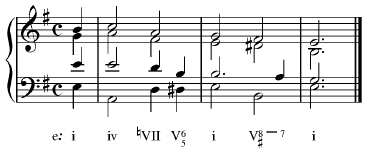
VII moves very comfortably to V6 or V65, allowing for a simple chromatic motion in the bass.
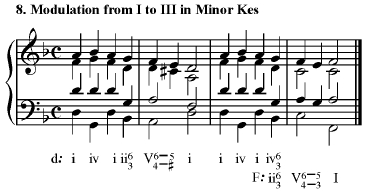
These next four examples show methods of modulation from I to III in minor. Such a modulation is the most commonly-encountered modulation in minor keys (far more common than modulation to the dominant) and therefore should be studied and practiced carefully. It’s really quite easy to modulate into the relative major—almost every chord in the minor key can be used as a pivot.
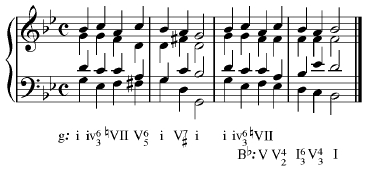
The relationship between minor and its relative major is very, very close. One could analyze measures 3-4 entirely in B-flat major—if they were isolated from their context, they would be heard unquestionably as being in B-flat major.
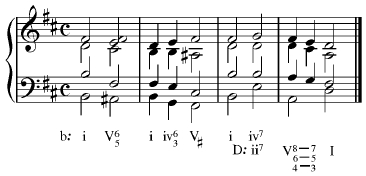
This is an outline of a modulation from Schubert’s lied The Wanderer.
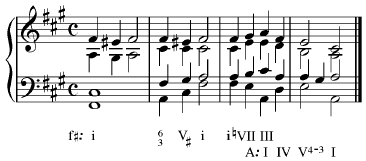
This is an outline of a modulation from Grieg’s Solveig’s Lied.